Reply To:
Name - Reply Comment
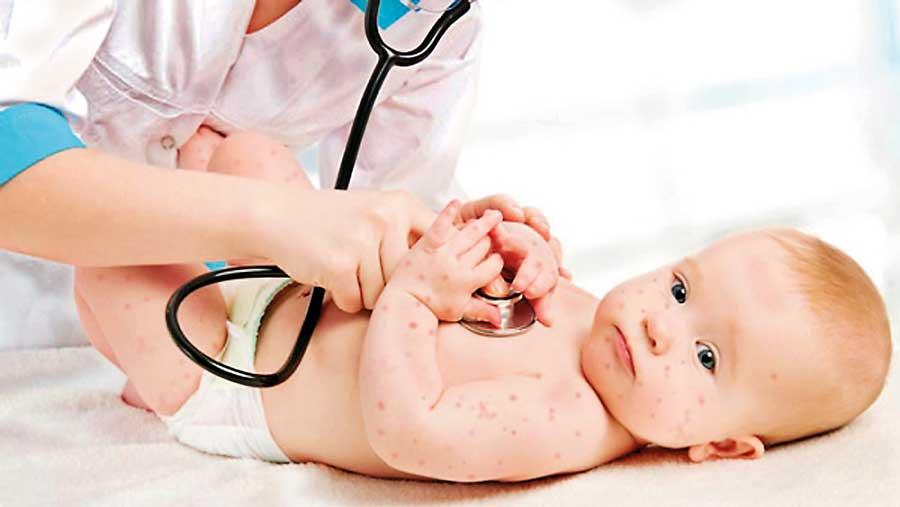
 Hand-foot-and-mouth disease is a viral infection which is commonly seen in young children. While it’s usually not serious, the disease can be a cause for concern among parents mostly due to its unique rash. The reason that ‘Health Capsule’ decided to explore the topic in details is because the number of patients who are reportedly having hand foot and mouth disease is on the rise, according to many hospital sources. Joining us to educate the public on this illness is Dr. Deepal Perera, Consultant Paediatrician at the Lady Ridgeway Hospital.
Hand-foot-and-mouth disease is a viral infection which is commonly seen in young children. While it’s usually not serious, the disease can be a cause for concern among parents mostly due to its unique rash. The reason that ‘Health Capsule’ decided to explore the topic in details is because the number of patients who are reportedly having hand foot and mouth disease is on the rise, according to many hospital sources. Joining us to educate the public on this illness is Dr. Deepal Perera, Consultant Paediatrician at the Lady Ridgeway Hospital.
The disease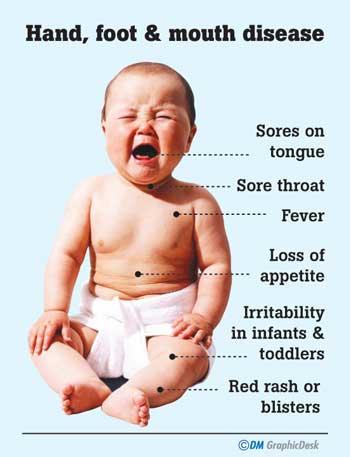
Hand-Foot-and-mouth disease is a viral infection. It is caused by a group of viruses known as the coxsackie virus. The beginning of the illness is usually marked by fever. The feature that makes hand-foot-and-mouth disease stand apart from other viral fevers is its distinctive rash. The disease itself is called the hand foot and mouth disease because the rash commonly occurs in the hands, feet and mouth in sick children. In addition, elbow and back are also susceptible to the rash.
The rash surface in the form of red patches in the above mentioned areas, but small vesicles filled with fluid are also not uncommon. The rash usually appears with the fever, but can also emerge a day or two following the fever. The lesion can sometimes resemble the chickenpox rash, adding to the parents’ worries.

Hand-foot-and-mouth disease usually occurs in children. Children around 6 months to 6-7 years of age are more susceptible. Infants less than 6 months old are believed to be protected by their mothers’ immunity which is passed into them, but can rarely contact the illness. Hand-foot-and-mouth disease is extremely rare in adults, but can occasionally be seen, usually in the mothers taking care of sick children.
The disease surfaces as epidemics during certain times of the year, with a considerable number of children being affected at a time. It usually lasts for around 3-4 days. But the areas affected by the rash can rarely become pigmented and dark and persists even after the other symptoms have resolved; causing concern to parents.
But this condition does not require any special treatments and will automatically resolve within three, four weeks, reassures the doctor.
Spreading of illness
Hand-foot-and-mouth disease can spread both by direct contact of the skin of an ill child, and through airborne virus particles, according to the doctor. The virus is highly contagious that one ill child inside a cramped nursery room can spread the illness to other children. Therefore keeping the sick children at home for at least four -five days is the wisest course of action, explains Dr. Perera.
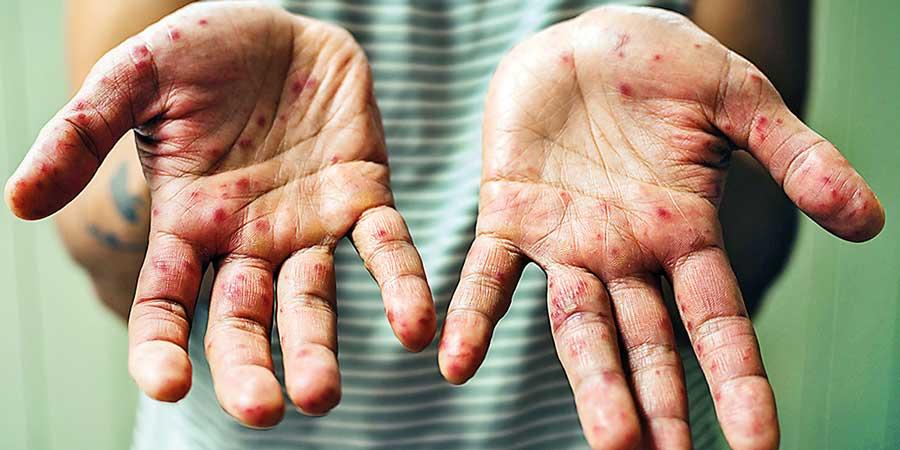
Complications
While the disease itself is self-limiting, needing no specific treatment most of the time, it can cause complications in a percentage of children. If the lesions appear inside the mouth, swallowing becomes difficult to the child and this might cause refusal of food. This would cause the child to deteriorate further. Dehydration is the major source of worry in children who are refusing food, so the parents need to be alert for signs of dehydration like dry skin, reduced amount of urine passed and lethargy.
Sometimes the rashes might get infected by a group of bacteria like staphylococcus. This is called a secondary bacterial infection and is one of the few indications where antibiotics are prescribed to a child having a viral fever.
It is found that Zinc deficiency can go hand in hand with hand foot and mouth disease, states Dr.Perera. If the Zinc is not adequately replaced, it may lead to complications like nail changes and increased time of recovery following illness.
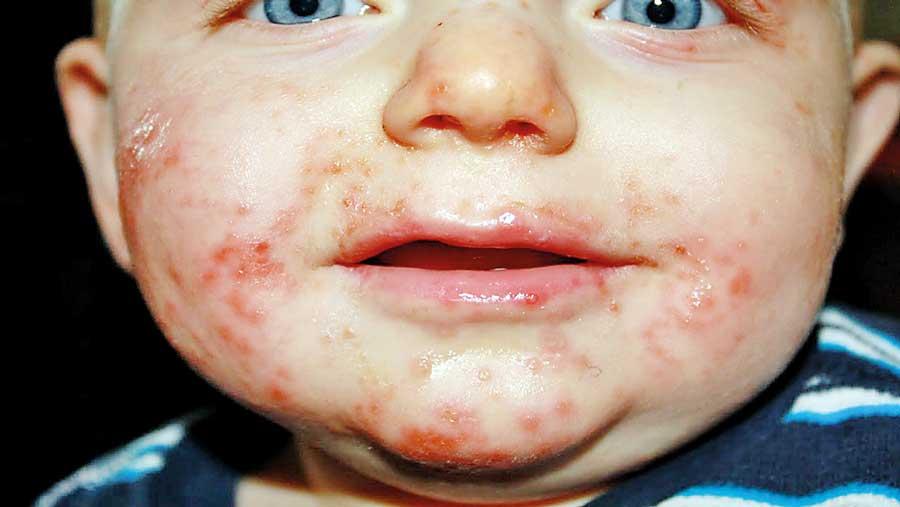
Treatment
There is no specific treatment for hand-foot-and-mouth disease, except for the symptomatic treatment. The disease itself resolves usually by 4-5 days, according to Dr.Perera. Paracetamol can be given if the child is having fever and an antihistamine tablet is prescribed to prevent itching. A soothing lotion such as calamine lotion can be applied on the rash.
As previously explained, children suffering from hand-foot-and-mouth disease can also have Zinc deficiency. Therefore Zinc supplementation in the form of tablets or through adding Zinc containing food like germinating seedlings to the diet is important.
But the most important point when it comes to the treatment of hand-foot-and-mouth disease is keeping the child well hydrated. Young children are more susceptible to dehydration, which can have life threatening consequences. Therefore if the child is having lesions in the mouth and have difficulty in swallowing, feeding him with cold and soothing food like yoghurt or jelly is advised. If the child still refuses food, he or she may rarely need hospital admission and administration of fluid like saline intravenously.
Sometimes the parents are reluctant to bathe the child when having skin lesions for the fear of aggravating them. This is a false claim, explains Dr.Perera, further stating that bathing the child and keeping the child clean would aid in his quick recovery.
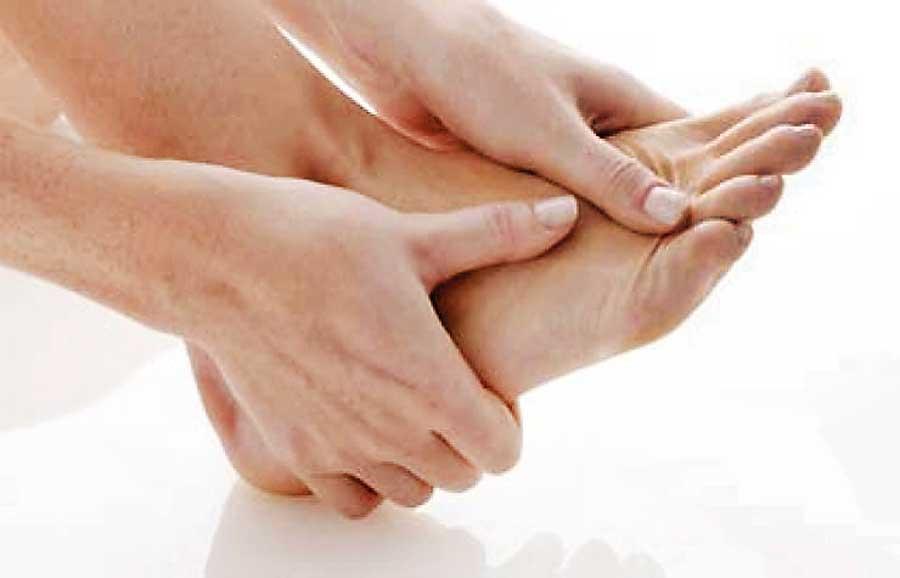
Seeking medical care
Every child with hand-foot-and-mouth disease does not need consultation by a doctor, affirms this doctor. But if the fever is persisting and if the child is very ill and refuses food, consulting your paediatrician is advisable.
Prevention
Unfortunately, no vaccination is available to prevent hand-foot-and-mouth disease. But the risk of it spreading can be minimised by reducing contact with the sick children during the illness. You can help prevent the spread of the disease by keeping your child at home without sending it to school or the nursery for a few days.